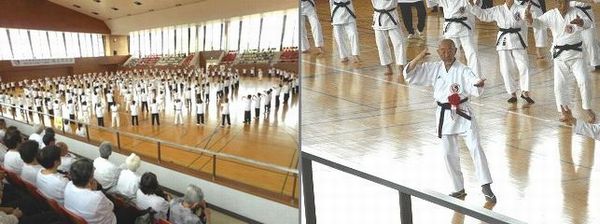The Taijiquan population is increasing, probably because it reflects the health boom and the aging society, or people come to know the pleasure to move and heal the mind in an era of abundance and luxury.
Originally, I think that Taijiquan has become popular in China as one of the medicines and treatments, and from the history of fighting to protect oneself. In Japan, it probably evolved from health methods such as health improvement and “Qigong” (breathing method). This is that Japanese people are good at it.
The “Japan Health Taijiquan Association Saitama Branch Member Mutual Exchange Meeting” was held on June 23 at the Saitama City West Gymnasium, with about 800 participants.

It has been 52 years since Mr. Yang Ming-Shi generalized it in Japan. The traditional “Chinese version of Yang-style Taijiquan” has been transformed into “Japanese version of Yang-style Taijiquan.” Saitama Prefecture has about 3,500 members. I heard that there are 35 branches nationwide.
The basic simplified Taijiquan 24 is Chinese style. When I met Chinese people in Malaysia some day and was invited by the Taijiquan exercise group early in the morning, it was exactly the same as Taijiquan except for a few fast movements. There are many people in their 50s and 60s. Also, if you continue Taijiquan for the rest of your life, you can keep yourself always in good health.
It is a “moving meditation” and is the best way to maintain physical and mental balance. It is good even after illness and it also prevents you from getting sick. I often hear people say that it is good for fall prevention, good for long distance hiking, and for good bowel movements.
Recent Taijiquan books come with a DVD to practice, so you can practice at home. However, if possible, it would be best if we could get some “spirit” from someone of friends in the cool green outdoors.
When I am practicing alone in the hotel garden during my trip, the number of friends will increase. However, it seems that “ Any3 Taichi” and Hachidan-Kin (the Baduanjin) are easier to remember than the 24th style.
Mr. K is grateful for me since I taught him Yang-style Taijiquan, from April, has improved his autonomic imbalance. It was the result of combining “Walking Zen” and “Zazen” with him. *Zen: Zen Buddhism.